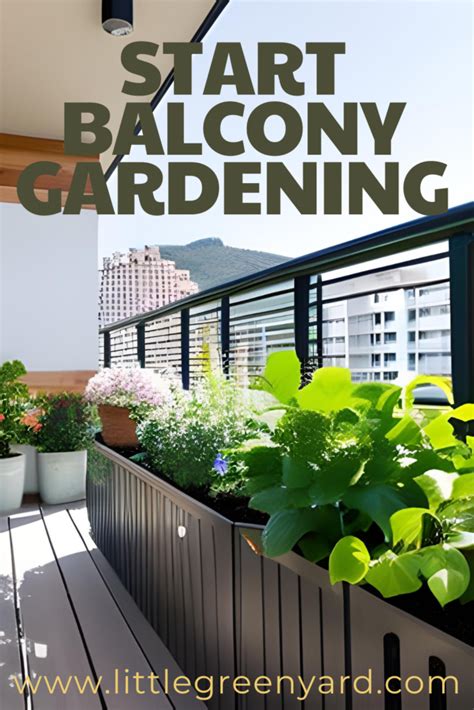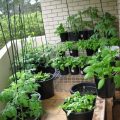Launching a Balcony Garden Without Breaking the Bank
Introduction
Starting a balcony garden doesn’t require deep pockets. With minimal investment and creativity, anyone can turn a modest space into a green sanctuary. This guide breaks down practical strategies for setting up a low-cost balcony garden, helping urban dwellers grow plants even with space and budget constraints.
Through a mix of affordable tools, DIY projects, and clever resource-saving techniques, you’ll learn how to successfully nurture plants while maximizing efficiency. Whether you’re a beginner or an experienced gardener, these tips will ensure you cultivate success without overspending.
Key Concepts
- Container Gardening: Using pots, planters, or recycled containers to grow plants on balconies.
- Low-Cost Gardening: Employing affordable or second-hand gardening tools and materials.
- Urban Gardening: Adapting traditional gardening to fit smaller, urban spaces.
- DIY Gardening Projects: Creating planters, trellises, or watering systems at home.
- Affordable Plants: Opting for hardy, easy-to-grow species that thrive in containers.
Historical Context
Balcony gardening isn’t a new concept; it has roots in ancient cities like Babylon, where rooftop gardens were common. More recently, during World War II, urban dwellers cultivated “victory gardens” on balconies to support food security. As populations concentrated in cities, interest in urban gardening surged, leading to modern movements emphasizing self-sufficiency and sustainable practices.
Current State Analysis
With rising urbanization, people increasingly seek nature within limited spaces. Balcony gardens offer an affordable way to bring greenery into cities, improve air quality, and promote mental well-being. In the post-pandemic era, balcony gardening has also become a hobby for stress relief, particularly as interest in sustainable living grows.
However, beginners often encounter challenges such as restricted sunlight, lack of gardening knowledge, and high startup costs. With a few clever strategies, these obstacles can be mitigated without compromising gardening success.
Practical Applications
Below are actionable steps to set up and maintain a successful balcony garden:
- Assess Balcony Conditions: Check for sun exposure, wind levels, and available space.
- Use Recycled Containers: Old buckets, wooden crates, or cans can make excellent plant containers.
- Start with Easy Plants: Herbs like basil or mint grow well in small spaces.
- DIY Self-Watering Systems: Use plastic bottles to create automatic drip systems.
- Compost Kitchen Scraps: Homemade compost reduces the need for store-bought fertilizers.
Case Studies
| Location | Initial Budget | Strategies Used | Outcome |
|---|---|---|---|
| New York, USA | $50 | Used recycled containers, grew herbs, made compost. | Harvested herbs within two months, maintained garden with minimal cost. |
| Kyiv, Ukraine | $30 | DIY trellis, rainwater collection, low-maintenance plants. | Efficient water use, sustained garden throughout the summer. |
| Berlin, Germany | $80 | Container gardening with edible flowers and herbs. | Improved mental well-being and added aesthetic value. |
Stakeholder Analysis
- Gardeners: Seek affordable solutions for growing plants.
- Environmental Groups: Promote balcony gardens to reduce carbon footprints.
- Landlords and Urban Planners: Concerned about potential structural impacts from heavy planters.
- Retailers: Benefit from increased sales of gardening tools and materials.
Implementation Guidelines
- Set Realistic Goals: Plan what to grow based on space and light availability.
- Create a Budget: List necessary tools and materials, focusing on essentials.
- Prioritize DIY Projects: Reduce costs by building your own planters and irrigation systems.
- Monitor and Adjust: Regularly evaluate plant health and adapt as needed.
- Join Gardening Communities: Engage with local or online groups for advice and support.
Ethical Considerations
While balcony gardening can benefit the environment, it’s essential to avoid practices that may harm ecosystems. For example, invasive plant species should be avoided, and synthetic fertilizers used sparingly to minimize pollution. Additionally, recycled materials should be non-toxic to ensure plants grow safely.
Limitations and Future Research
- Space Limitations: Balconies restrict the types and number of plants that can be grown.
- Climate Restrictions: Some urban regions may have harsh weather conditions, limiting plant choices.
- Lack of Expertise: Beginners may struggle without proper guidance.
- Structural Constraints: Not all balconies can support heavy planters.
- Future Research: Investigating sustainable solutions for vertical gardening could enhance urban agriculture.
Expert Commentary
Experts in urban gardening agree that starting small and building gradually is the best strategy for beginners. “Success in balcony gardening doesn’t come from spending a fortune,” notes Mary Robinson, a horticulturist specializing in urban agriculture. “It’s about understanding your space, experimenting with different plants, and being resourceful.”
Given the growing interest in urban sustainability, the trend of balcony gardening will likely continue. Experts predict innovations in lightweight soil alternatives and automated irrigation systems, which will further reduce barriers for city dwellers. The combination of practicality, environmental impact, and mental well-being makes balcony gardening an increasingly attractive option for urban populations.


